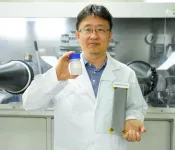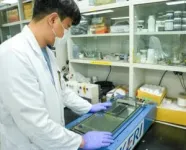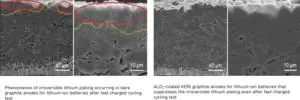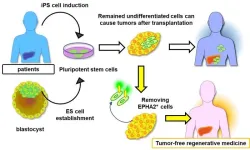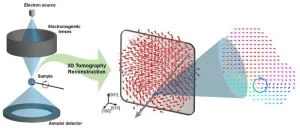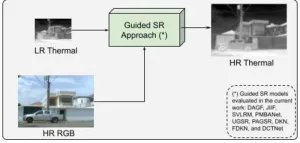(Press-News.org) A research team led by Dr. Choi Jeong Hee at the Korea Electrotechnology Research Institute (KERI) Battery Materials and Process Research Center, in cooperation with a Hanyang University team mentored by Professor Lee Jong-Won and a Kyunghee University team mentored by Professor Park Min-Sik, developed a core technology to ensure the charging/discharging stability and long-life of lithium-ion batteries under fast-charging conditions.
A crucial prerequisite for the widespread adoption of electric vehicles (EVs) is the enhancement of lithium-ion battery performance in terms of driving range and safety. Fast charging is also essential for user convenience. However, increasing the energy density of lithium-ion batteries necessitates thicker electrodes, which can lead to battery degradation and performance deterioration during rapid charging.
To address this issue, the KERI team discovered a solution by partially coating the surface of the anode of the lithium-ion battery with aluminum oxide (Al2O3) particles smaller than 1 micrometer (㎛). While many researchers worldwide have concentrated on the materials within the electrode, such as introducing functional nanotechnology into anode materials like graphite, Dr. Choi's team employed a straightforward processing technique to coat the electrode's surface with aluminum oxide.
Low in cost, excellent in electrical insulation and heat resistance, chemically stable, and possessing good mechanical properties, aluminum oxide is widely used in various ceramics. The KERI researchers found that aluminum oxide particles effectively control the interface between the anode and the electrolyte in lithium-ion batteries, forming an interfacial highway for efficient Li+ transport. This prevents the electrodeposition of lithium (an irreversible change that makes the lithium unavailable for additional charging and discharging) during fast charging, thereby ensuring the stability and lifespan of the lithium-ion battery during charging and discharging.
Another advantage of this technology is that it enables an increase in the energy density of lithium-ion batteries. Introducing other functional materials into the electrode's interior to improve performance and stability often complicates the synthesis process and reduces the amount of reversible lithium (initial coulombic efficiency). It also increases the electrode thickness, leading to performance deterioration under fast charging conditions. However, the KERI technology involves surface treatment of the graphite anode, rather than modifying the interior active graphite materials. This approach achieves stable performance even under fast charging conditions for high-energy-density thick-film electrodes without a loss in the amount of reversible lithium.
Through various tests, the team confirmed that the high-energy-density anode coated with aluminum oxide (4.4 mAh/cm²) exhibits world-class performance, maintaining more than 83.4% of its capacity (residual capacity ratio) even after 500 cycles of rapid charging. They have verified this performance with pouch cells of up to 500mAh. The team is now planning to scale up the technology to make it applicable to large-area, medium- to large-capacity cells.
"Convenient fast charging and the energy density of lithium-ion batteries have long been considered a trade-off, which has hindered the widespread adoption of electric vehicles," said Dr. Choi. "Our work will help develop stable, high-energy-density lithium-ion batteries capable of fast charging. This advancement will contribute to the wider adoption of EVs and support the achievement of national carbon neutrality."
The excellence of this work has been demonstrated by patent registrations in both Korea and the United States. The findings were also published in a recent edition of Advanced Functional Materials, an internationally renowned journal in the field of materials engineering (JCR Impact Factor 19, top 3.7%).
KERI is a government-funded research institute under the National Research Council of the Ministry of Science and ICT. This research was funded by the Samsung Future Technology Project and the Ministry of Trade, Industry and Energy's Industrial Technology Innovation Project (high-power battery and charging system technology for EVs). <KERI>
END
Fast charging electric vehicles with stable high-energy density lithium-ion batteries
A KERI team led by Dr. Choi Jeong Hee developed an aluminum oxide-based surface coating for anode materials. A simple process for treating the surface, rather than the materials inside the electrode, prevents irreversible lithium loss.
2024-05-31
ELSE PRESS RELEASES FROM THIS DATE:
Tackling the hurdle of tumor formation in stem cell therapies
2024-05-31
Ikoma, Japan – Pluripotent stem cells (PSCs) are a type of stem cells capable of developing into various cell types. Over the past few decades, scientists have been working towards the development of therapies using PSCs. Thanks to their unique ability to self-renew and differentiate (mature) into virtually any given type of tissue, PSCs could be used to repair organs that have been irreversibly damaged by age, trauma, or disease.
However, despite extensive efforts, regenerative therapies involving PSCs still have many hurdles to overcome. One being the formation of tumors (via ...
A 20-year-old puzzle solved: KAIST research team reveals the 'three-dimensional vortex' of zero-dimensional ferroelectrics
2024-05-31
Materials that can maintain a magnetized state by themselves without an external magnetic field (i.e., permanent magnets) are called ferromagnets. Ferroelectrics can be thought of as the electric counterpart to ferromagnets, as they maintain a polarized state without an external electric field. It is well-known that ferromagnets lose their magnetic properties when reduced to nano sizes below a certain threshold. What happens when ferroelectrics are similarly made extremely small in all directions (i.e., into a zero-dimensional structure such as nanoparticles) has been a topic of controversy for a long time.
The research team led by Dr. Yongsoo ...
Children’s Hospital Los Angeles team finds new potential causes of rare and lethal bone cancer
2024-05-31
Little is known about the genetics and biology of chordoma, a rare and aggressive bone tumor. Chordomas occur in approximately one in a million people in the U.S. a year and only five percent of these are in children. These tumors can arise anywhere along the spine in adults. However, in children these tumors occur mostly at the base of the skull, making complete surgical removal challenging or impossible. Any tumor remnants are treated with high doses of radiation—which can cause significant damage to the developing brain.
A team of researchers led by Xiaowu Gai, PhD and Jaclyn Biegel, PhD, FACMG, at the Center for Personalized Medicine ...
One in four Thai concerned about colorectal cancer screening cost
2024-05-31
According to research led by Prof. Varut Lohsiriwat, Professor of Surgery, Division of General Surgery (Section of Colorectal Surgery) of Siriraj Hospital, at Mahidol University, CRC is the third most common cancer in Thailand, accounting for 11% of the cancer burden. It is the only malignancy with an increased incidence in both genders in the country.
By 2040, the burden of CRC is projected to increase to 3.2 million new cases and 1.6 million deaths per year representing a 66% and 71% rise in new cases and deaths respectively relative ...
Infants hear significantly more speech than music at home, UW study finds
2024-05-31
Speech and music are the dominant elements of an infant’s auditory environment. While past research has shown that speech plays a critical role in children’s language development, less is known about the music that infants hear.
A new University of Washington study, published May 21 in Developmental Science, is the first to compare the amount of music and speech that children hear in infancy. Results showed that infants hear more spoken language than music, with the gap widening as the babies get older.
“We wanted to get a snapshot of what’s happening in infants’ home environments,” said corresponding author ...
New coral disease forecasting system led by University of Hawai'i team
2024-05-31
Research led by the University of Hawaiʻi at Mānoa Hawaiʻi Institute of Marine Biology (HIMB) has led to a new tool for forecasting coral disease that could help conservationists step in at the right times with key interventions. Ecological forecasts are critical tools for conserving and managing marine ecosystems, but few forecasting systems can account for the wide range of ecological complexities in near-real-time.
Using ecological and marine environmental conditions, the Multi-Factor Coral Disease Risk product predicts the risk of two diseases across reefs in the central and western Pacific and along the east coast of Australia. An article ...
Tobacco funded research still appearing in top medical journals
2024-05-31
Tobacco-funded research is still appearing in highly-cited medical journals - despite attempts by some to cut ties altogether, finds an investigation by The Investigative Desk and The BMJ today.
Although the tobacco industry has a long history of subverting science, most leading medical journals don’t have policies which ban research wholly or partly funded by the industry.
And even when publishers, authors and universities are willing to restrict tobacco industry ties, they struggle ...
Trout in mine-polluted rivers are genetically ‘isolated’
2024-05-31
Trout living in rivers polluted by metal from old mines across the British Isles are genetically “isolated” from other trout, new research shows.
Researchers analysed brown trout at 71 sites in Britain and Ireland, where many rivers contain metal washed out from disused mines.
While trout in metal-polluted rivers appear healthy, they are genetically distinct – and a lack of diversity in these populations makes them vulnerable to future threats.
By comparing the DNA of trout in rivers with and without metal pollution, the researchers found that metal-tolerant trout ...
How researchers are protecting AI of the future
2024-05-31
Trust is vital to the widespread acceptance of AI across industries, especially when safety is a concern. For example, people may be hesitant to ride in a self-driving car knowing that the AI running it can be hacked. One barrier to increasing trust is that the algorithms powering AI are vulnerable to such attacks.
Dr. Samson Zhou, assistant professor in the Department of Computer Science and Engineering at Texas A&M University, and Dr. David P. Woodruff, professor in the Computer Science Department at Carnegie Mellon University, hope to strengthen algorithms used by big data AI models against attacks. Big data AI models are ...
Enhancement of guided thermal image super-resolution approaches
2024-05-31
Researchers of CIDIS at ESPOL Polytechnic University have developed a new method to enhance thermal image super-resolution by employing synthetic imagery. This novel approach utilizes high-resolution images from the visible spectrum to guide the super-resolution of low-resolution thermal images, significantly improving the detail and utility of thermal imaging across various applications.
When visualizing thermal images, one typically imagines the blurry, less-detailed outputs common with standard thermal ...
LAST 30 PRESS RELEASES:
Why nail-biting, procrastination and other self-sabotaging behaviors are rooted in survival instincts
Regional variations in mechanical properties of porcine leptomeninges
Artificial empathy in therapy and healthcare: advancements in interpersonal interaction technologies
Why some brains switch gears more efficiently than others
UVA’s Jundong Li wins ICDM’S 2025 Tao Li Award for data mining, machine learning
UVA’s low-power, high-performance computer power player Mircea Stan earns National Academy of Inventors fellowship
Not playing by the rules: USU researcher explores filamentous algae dynamics in rivers
Do our body clocks influence our risk of dementia?
Anthropologists offer new evidence of bipedalism in long-debated fossil discovery
Safer receipt paper from wood
Dosage-sensitive genes suggest no whole-genome duplications in ancestral angiosperm
First ancient human herpesvirus genomes document their deep history with humans
Why Some Bacteria Survive Antibiotics and How to Stop Them - New study reveals that bacteria can survive antibiotic treatment through two fundamentally different “shutdown modes”
UCLA study links scar healing to dangerous placenta condition
CHANGE-seq-BE finds off-target changes in the genome from base editors
The Journal of Nuclear Medicine Ahead-of-Print Tip Sheet: January 2, 2026
Delayed or absent first dose of measles, mumps, and rubella vaccination
Trends in US preterm birth rates by household income and race and ethnicity
Study identifies potential biomarker linked to progression and brain inflammation in multiple sclerosis
Many mothers in Norway do not show up for postnatal check-ups
Researchers want to find out why quick clay is so unstable
Superradiant spins show teamwork at the quantum scale
Cleveland Clinic Research links tumor bacteria to immunotherapy resistance in head and neck cancer
First Editorial of 2026: Resisting AI slop
Joint ground- and space-based observations reveal Saturn-mass rogue planet
Inheritable genetic variant offers protection against blood cancer risk and progression
Pigs settled Pacific islands alongside early human voyagers
A Coral reef’s daily pulse reshapes microbes in surrounding waters
EAST Tokamak experiments exceed plasma density limit, offering new approach to fusion ignition
Groundbreaking discovery reveals Africa’s oldest cremation pyre and complex ritual practices
[Press-News.org] Fast charging electric vehicles with stable high-energy density lithium-ion batteriesA KERI team led by Dr. Choi Jeong Hee developed an aluminum oxide-based surface coating for anode materials. A simple process for treating the surface, rather than the materials inside the electrode, prevents irreversible lithium loss.
